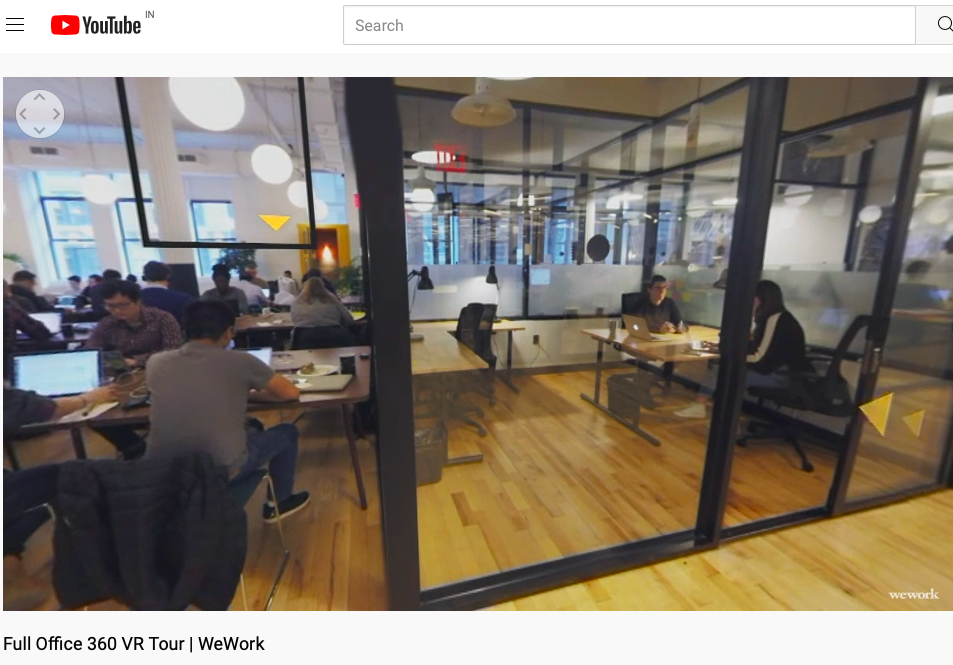Simply put, Augmented Reality (AR) and Virtual reality (VR) are two powerful technologies that bridge our physical and digital worlds. From healthcare and entertainment to supply chain management and automotive, AR and VR have made their way across domains.
In the workplace, they are powerful tools for improving recruitment, hiring, marketing, and training processes. Over the last few years, AR and VR have become more accessible for business and learning, both financially and technologically, says Pratik Dholakiya founder of Growfusely.
These technologies have been noticed to improve content development workflows, training simulations, and other day-to-day operations. AR and VR help bring together employees from across the globe and allow businesses to reach a wider audience across geographies.
AR and VR in a world of constant organisational change
It is common knowledge that workplace transformation brings forth a host of challenges (or change), such as introducing new work settings, technologies, or processes. That is why employee buy-in is essential for an effective organisational change management program.
But, what is change management?
It represents all approaches to prepare, support, and guide employees, teams, and departments to embrace change.
As of today, an increasing number of companies are deploying AR and VR technologies for change management to establish their brand, improve internal processes, and project themselves as advanced businesses.
The market for both AR and VR is projected to grow by $77.0 billion (€67.95 billion) by 2025, registering a CAGR of 38.1% from 2020 to 2025.
If you are a company looking to invest in AR/VR capabilities to optimise your day-to-day operations and help your employees deal better with change, here is how you can:
1. Conduct onboarding and workplace tours for new employees
When onboarding remote employees, VR offers a unique experience, which cannot be delivered through video calls. People feel more connected and present in their work environment because of the immersive technologies.
Changing jobs is never easy, but VR helps establish rapport quickly and fosters trust among team members. It is a great way to familiarise new employees with their workplace before coming in person. VR smoothens the onboarding process and makes it more engaging for the team.
Retail giant Walmart uses VR in onboarding by giving recruits a chance to witness the corporate culture and get a look n’ feel of office spaces. WeWork has also created 360-degree VR tours of some of their offices for end customers to see what it is like to work at a WeWork location.
When your new hires arrive on the first day of work, they will already know all critical areas around the office like meeting rooms, their desks, and their manager’s cabin because of an interactive VR experience.
Even if your workplace has gone remote, AR and VR are useful for employees to learn technical processes and physical skills needed for their new job. You can quickly introduce them to your process through VR and prepare them for real-world interactions.
2. Practice emergency drills with your employees
Companies need to conduct emergency drills from time to time, but most employees find them boring and disruptive. AR and VR technologies can help create simulations of different scenarios. This allows companies to evaluate employees’ performance and stress levels.
Along with preparing them to handle a real-life emergency, AR and VR technologies help improve security protocols to be implemented. They allow you to safely and accurately recreate risky situations without any actual risk to life.
You can increase employee engagement through this and train more employees simultaneously or even use the same scenario for different employees across domains.
Since the entire process is virtual, it is cost-effective and customisable based on location and role-specific scenarios. Employees do not need special training or safety gear to participate in the drill. You can present different scenarios in 3D environments to make training realistic.
The Cleveland Clinic at Case Western Reserve University makes medical professionals and students use an AR headset to delve into the human body in 3D. The immersive feeling facilitates their learning prowess and then can quickly identify the fault with the body.
3. Organise task walkthroughs for better understanding
Virtual training simulations help your employees understand the daily tasks they need to perform. Using AR and VR technologies, you can create virtual environments and help them learn their job quickly and intuitively. This is especially handy in industries like Aviation.
Infrastructure consulting firm AECOM works on large and complicated building projects. It uses Microsoft HoloLens for its employees working from remote locations to project 3D engineering models as holograms in their homes or offices. This allows the team, often spread across geographies, to work together and identify potential problems.
Change is never easy, but by leveraging AR/VR capabilities, they can learn basic skills and adapt to specific processes at their own pace. The technologies provide a distracting free-environment speeding up the learning process.
You can maintain the quality of training uniformly by minimising human intervention. Also, VR devices offer a realistic experience and drive more engagement compared to training delivered in classrooms. Experiment by analysing employee performance in various scenarios.
It is a safe way for employees to practice tasks related to the job and make mistakes without any additional cost and consequences. Providing an immersive experience prepares them for the job and ensures safety during the learning phase.
4. Run compliance and on-the-job training sessions
Companies must ensure their employees are well acquainted with compliance to avoid long-term damages. But distributing the compliance document to every employee and hoping they will read it by themselves does not work.
Use VR to create an online simulation to train your staff members with examples. The technology allows you to create scenarios where certain regulations were violated. Employees can see if their response would be the right approach to such situations.
It is better to make them learn best practices instead of delivering lectures through classroom lessons. They will be able to work out a solution when faced with similar situations, ensuring better real-life implementation of regulations.
VR allows you to make the process engaging by gamifying it. You can create different situations to test employee responses to those scenarios. It would make the process more entertaining and ensure each employee is adequately trained.
Research shows that AR/VR leaders have a recall rate of 80% after one year of training. Immerse, a VR training solution, used DHL’s standard operating procedures to build a VR training program where the employees could get together and train in a virtual setting from anywhere across the globe.
5. Make recruitment focused and seamless
Using AR and VR in recruitment helps recruiters offer a wider candidate pool immersive and engaging experience. The technologies allow potential candidates to witness the work environment and decide if the company is a good fit or not.
You can showcase your corporate culture, office space, and even the company celebrations through a VR video. It helps candidates see their new workplace and decide if it would be suitable to apply to the positions.
You can even give candidates an insight into their role by simulating their workspace. Show them what the profile involves and their responsibilities. They will have clarity if their skill set matches the role’s requirement. It will also help filter out genuinely interested candidates.
VR also allows recruiters to test candidates’ decision-making skills in real-life situations. Create virtual scenarios of challenges your employees face every day and notice the candidate’s response. It will help you determine which candidates possess the required skills for the role.
German railway company Deutsche Bahn once employed VR in recruitment to attract younger generations to apply for as train conductors.
Using VR, the company was able to give the younger people a greater understanding of the role and responsibilities. The result? They saw a huge increase in applicants with the desired skills.
6. Drive brand awareness through interactive content
Businesses can leverage the power of VR to establish brand awareness by creating engaging content as per their marketing strategy.
Campaigns using AR and VR tend to perform better. It creates the illusion of presence within the space, thus drawing more attention and evoking your audience’s emotions. Using advanced technology elevates your brand’s status while building trust in it.
Offering a digital experience also improves the conversion rate by engaging with customers. VR lets you focus on the customer pain points with greater precision and can be used for product demonstration by placing it in your showroom or exhibition hall.
With 360-degree views of products, customers will know how your product or service can bring about a change and thus make better and quicker buying decisions.
You can place virtual experiences inside real-world environments like stadiums or museums that are popular tourist spots. From the British Museum in London to the National Gallery of Art in Washington, D.C to Musee d’Orsay in Paris, many museums have virtual tours.
The experience created by AR and VR offers a memorable event marketing experience. Your business will stand out from the competitors and attract more eyeballs.
Over to you
Companies are preparing themselves for a tech-driven future leveraging advanced technologies. AR and VR technologies are an innovation deployed by companies to improve employee engagement, increase productivity, save costs, and build brand identity. Recent advancements in AR and VR capabilities are becoming more viable for companies.
They are leveraging it to improve various processes, including immersive work environments for employees and engaging marketing experiences for customers, thus bringing about a change that does not seem so daunting after all!
The author is Pratik Dholakiya, founder of Growfusely.
About the author
Pratik Dholakiya is the founder of Growfusely, a content marketing agency specialising in content and data-driven SEO. He regularly speaks at various conferences about SEO, content marketing, and entrepreneurship. As a passionate SEO and content marketer, he shares his thoughts and knowledge in publications like Search Engine Land, Search Engine Journal, Entrepreneur Magazine, Fast Company, The Next Web, YourStory, and Inc42, to name a few.
Comment on this article below or via Twitter: @IoTNow_OR @jcIoTnow











